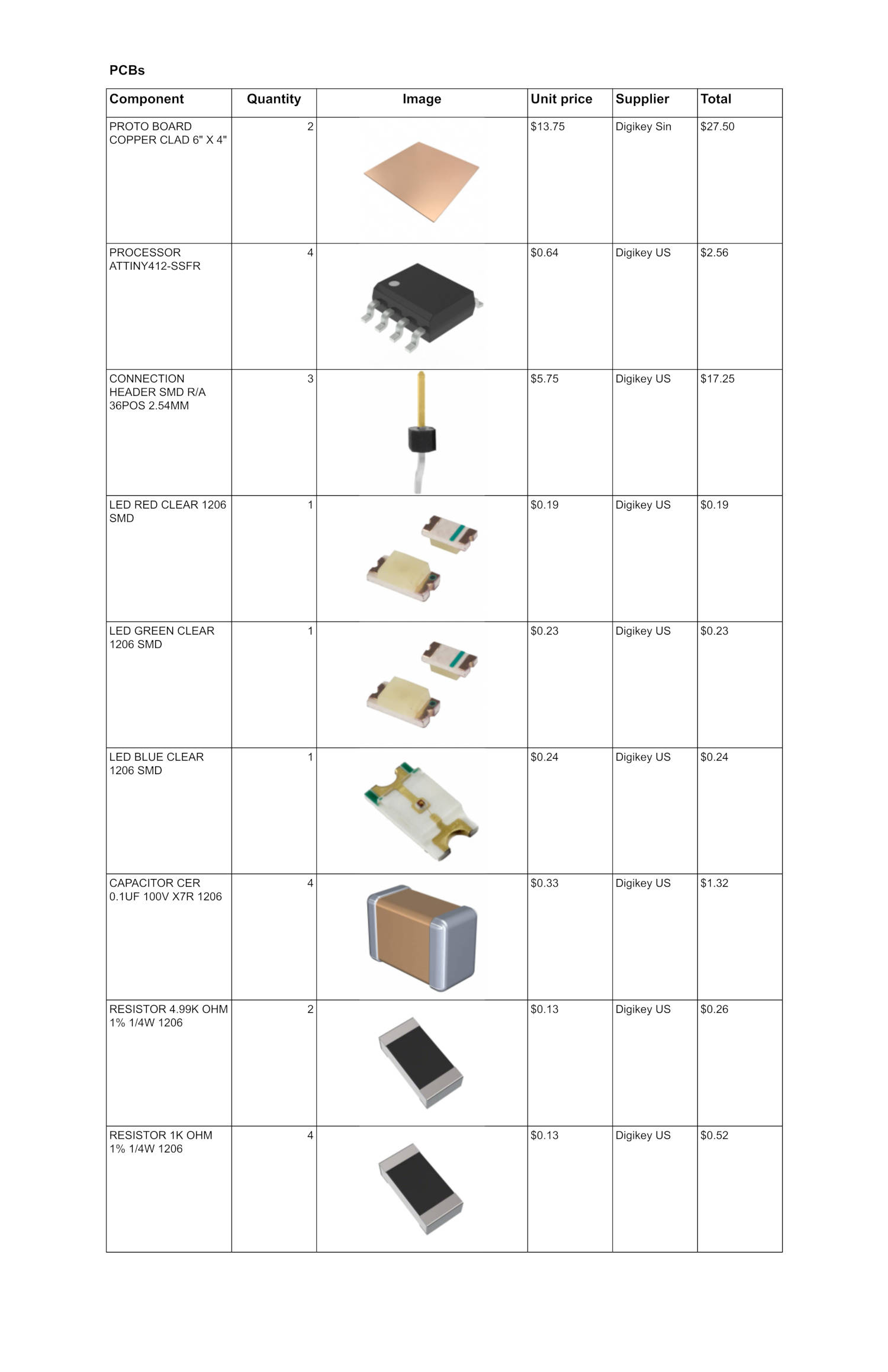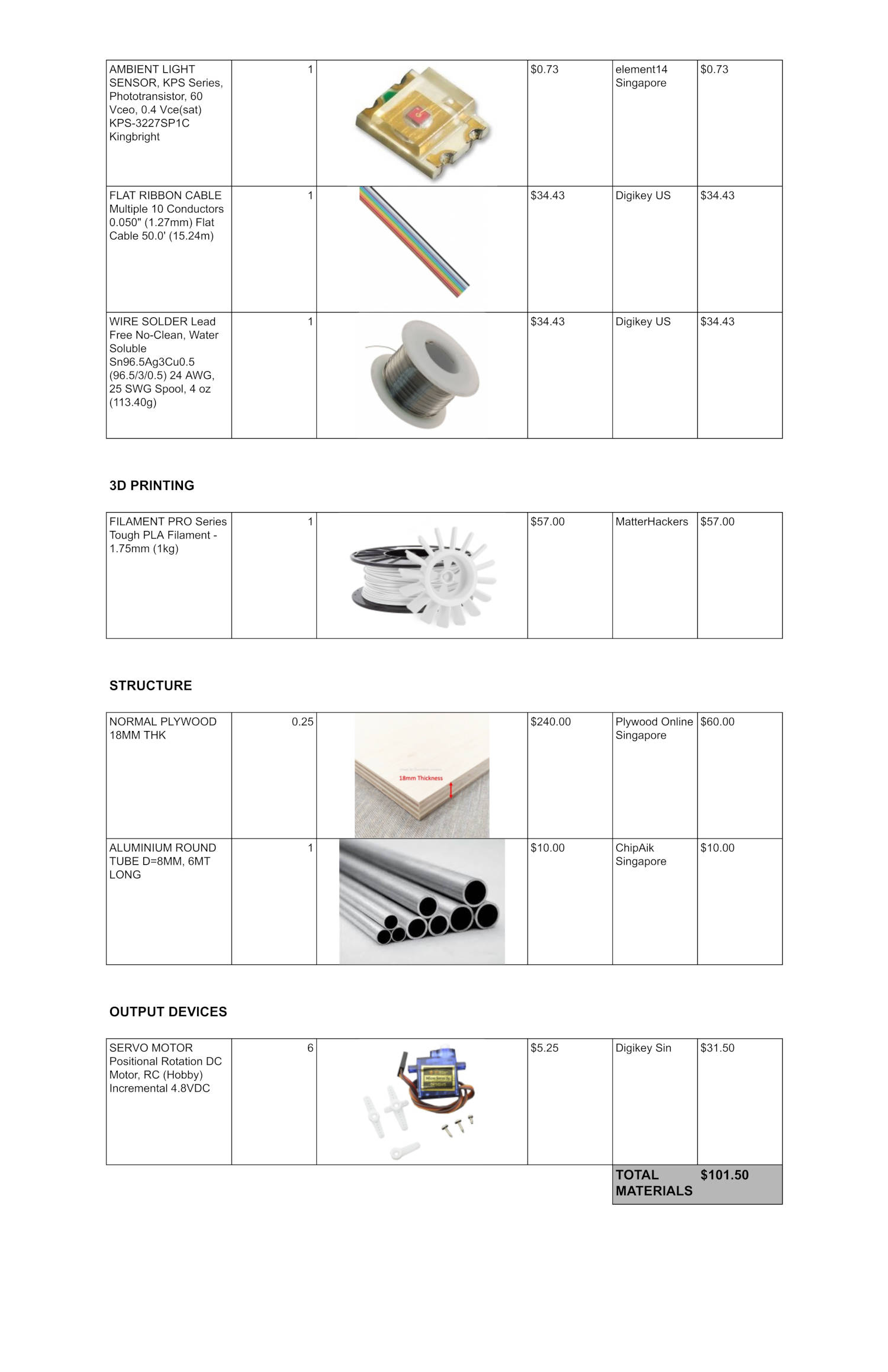dummy
17.APPLICATIONS AND IMPLICATIONS
This week, I have made some progress in my final project:
- I have made the first cover prototype for the “Kinetic Curtain” Module, designed in Fusion 360 and 3D printed, see Final Project.
- I have done the Programming test to connect a servo via I2C and move it from the Main Board command, see Final Project.
- Found some materials I need to build the “Kinetic Curtain”., see Final Project.
ASSIGNMENT
Propose a final project “Masterpiece” that integrates the range of units covered, answering the following:
- What will it do?
- Who's done what beforehand?
- What will you design?
- What materials and components will be used?
- Where will it come from?
- How much will they cost?
- What parts and systems will be made?
- What processes will be used?
- What questions need to be answered?
- How will it be evaluated?
- Your project should incorporate: 2D and 3D design, additive and subtractive fabrication processes, electronics design and production, embedded microcontroller interfacing and programming, system integration and packaging
- Where possible, you should make rather than buy the parts of your project
- Projects can be separate or joint but need to show individual mastery of the skills and be independently operable
MY MASTER PIECE
I have always been fascinated by architectural elements that can dynamically respond to stimuli. As part of my Final Project, I decided to create a structure called the "Kinetic Curtain." This design incorporates movement, allowing it to transform and adapt in response to various influences.
1. What will it do?
The idea of the project is to explore the use of kinetic architecture, where elements can respond with movement and adapt to changing stimuli. This involves integrating mechanical elements, patterns, and materials to create dynamic and interactive architectural features. The main focus is to enhance the aesthetic appeal, functionality, and experimental qualities of architectural spaces by incorporating responsive elements that can change shape, position, and the quality of light.
You can find more detailed information about the design and construction process of the project on my Final Project page.
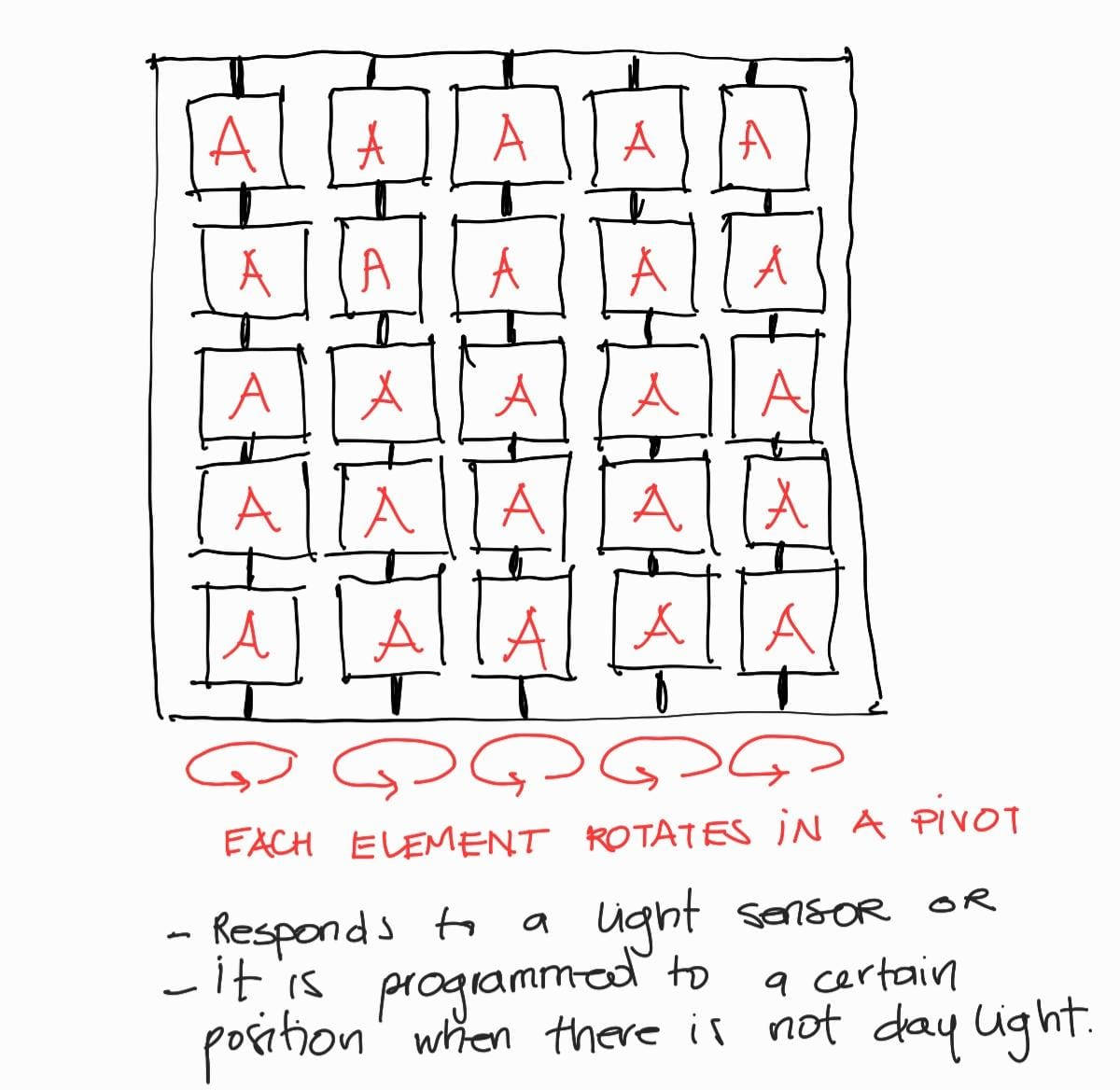
2. Who has done what beforehand?
Kinetic facades or responsive architecture are not new concepts in the world of architecture or in the field of Fab Academy. Throughout history, architects have developed mechanisms to control the entry of light into buildings, offering protection from the sun and creating unique lighting conditions. Nowadays, these elements have become adaptive and can move in response to stimuli, making them kinetic elements.
Here are a few inspiring examples:
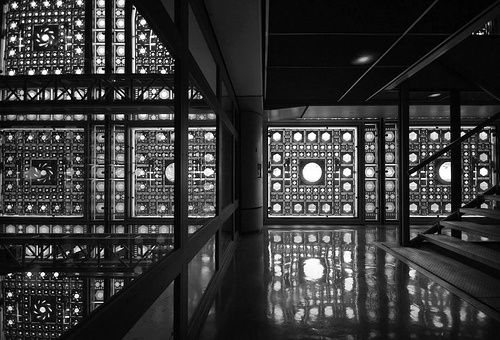
Arab World Institute by Jean Nouvelle
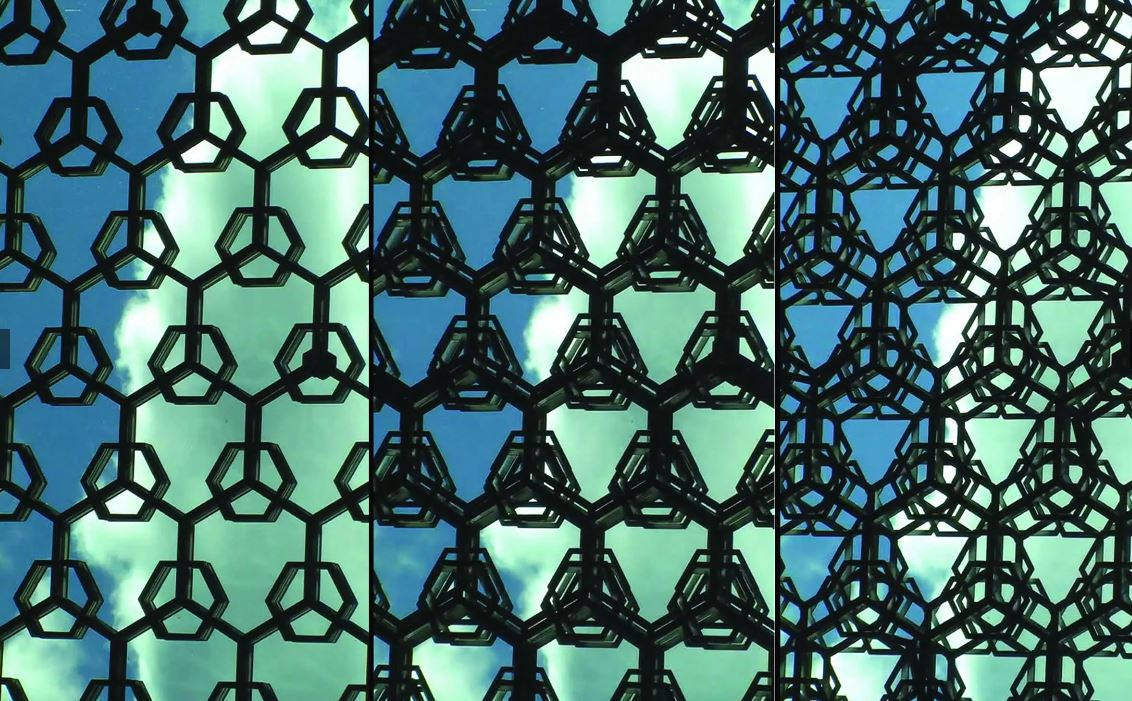
Dynamic Windows by Hoberman
At Fab Academy, some students made Kinetic Architecture for their final projects:
Interactive Architecture Kit by Enrico Cacciapioti
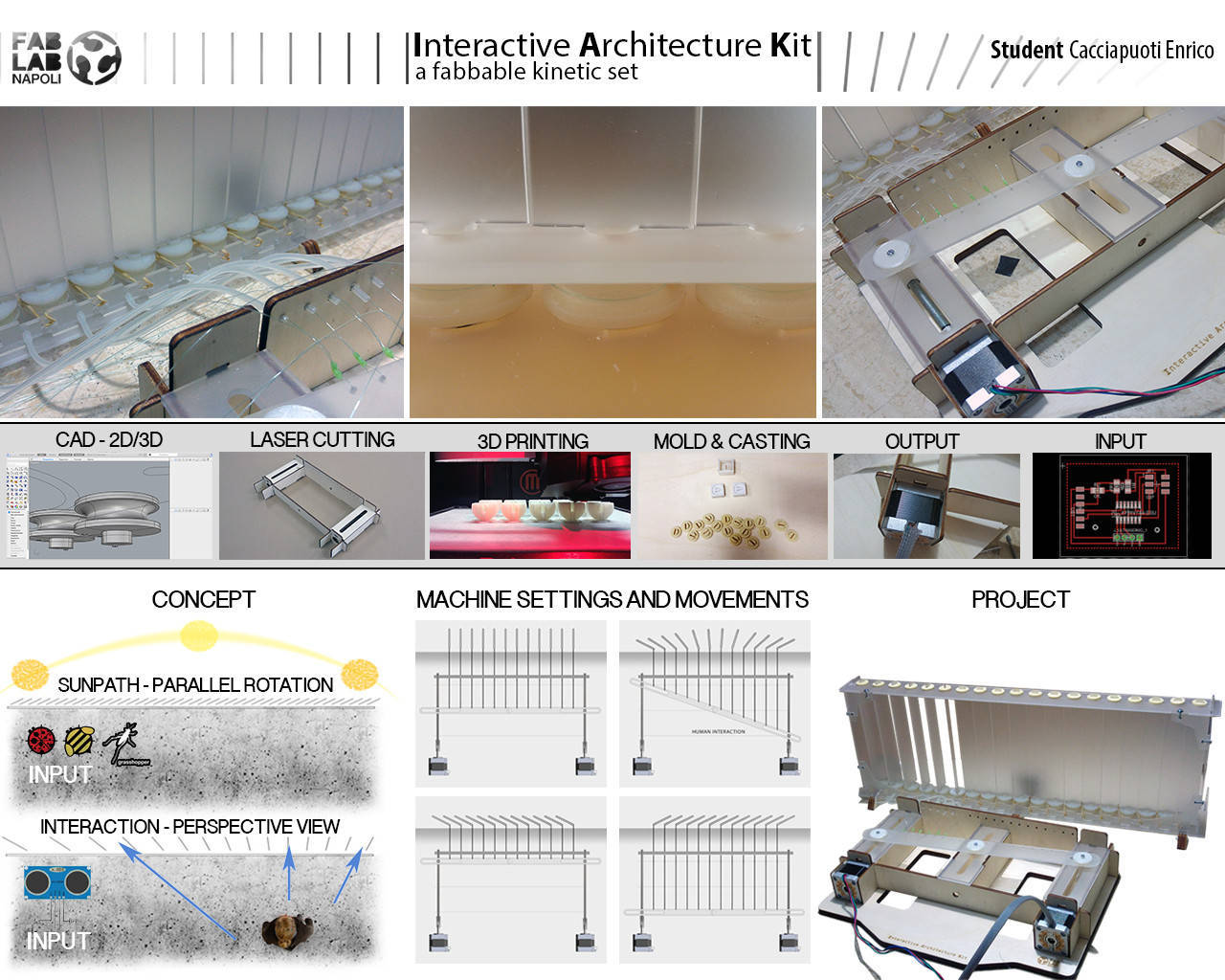
Interactive Modular Block by Sara Islam


3. What will I design?
I will try to follow a “Circular Progress”, initially focusing on designing a proof of concept for the modules of the curtain, paying attention to the mechanics, electronics, and overall design. Then little by little I will add more complexity to the system by adding more modules.
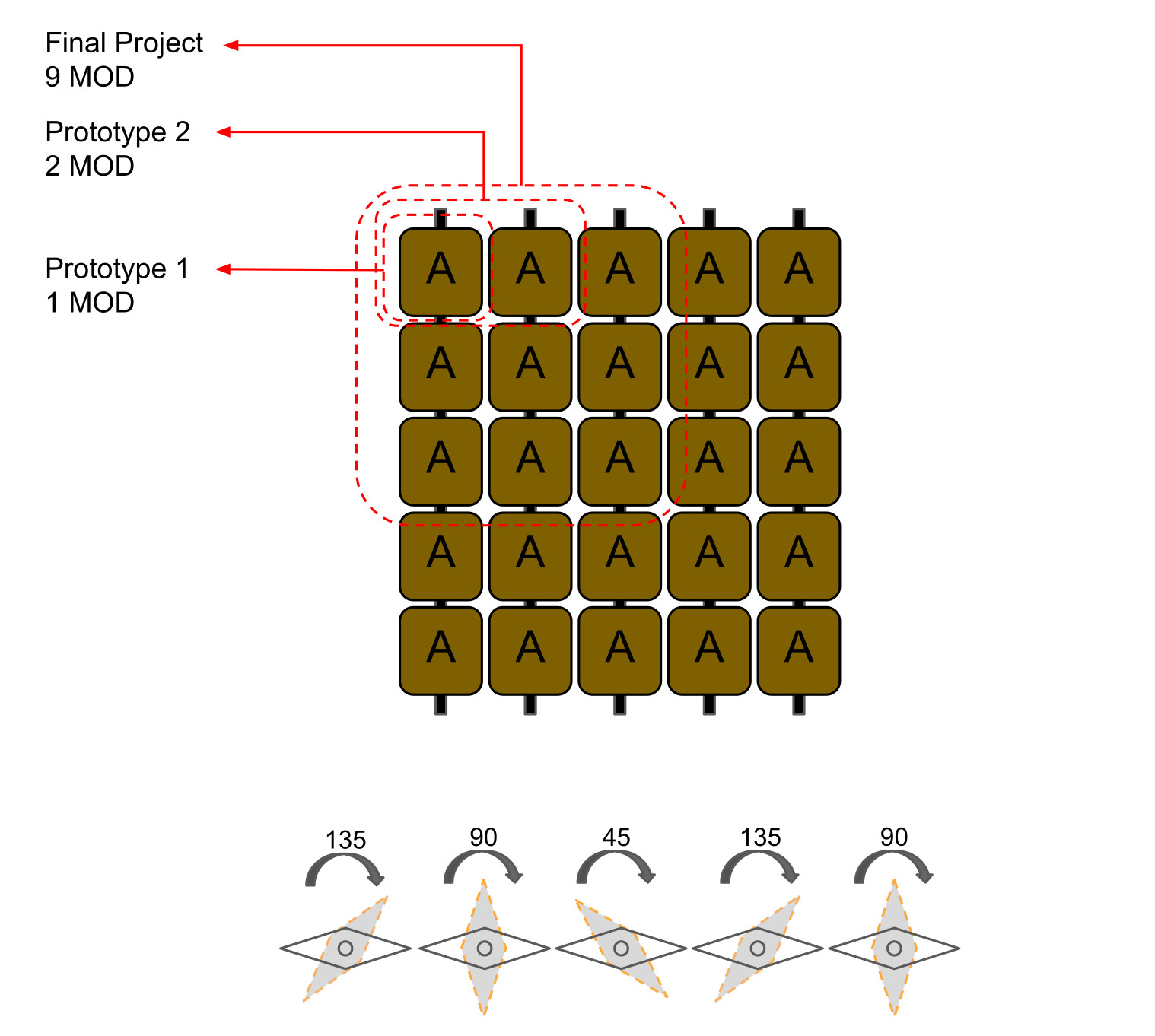
During this design progress, I will be producing:
- Gears, mechanical movement
- Module A: Module Box
- Electronic Boards: Mainboard, light sensor board, and Sub-boards.
- Structure to hold the modules in the system.
- Programming: I2C Network and Bluetooth system to move the modules
- Main Board: Box
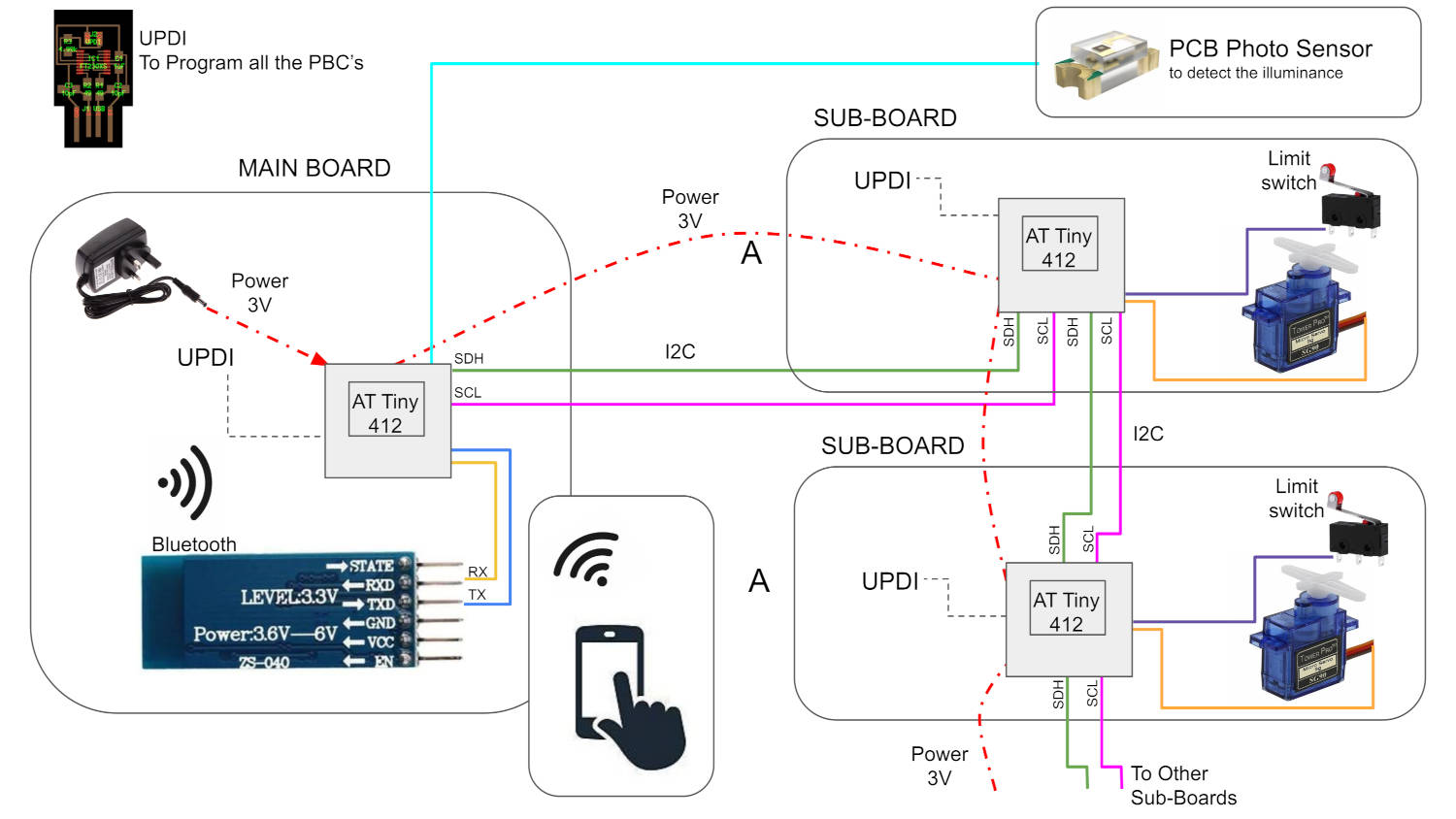
4. What Materials and components will be used?
-Materials:
- Plastic: 3D printing
- Wood: Structure
- Aluminum: Vertical structure to hold modules
- Coffee Grounds + Resin
-Components
- Aluminum Tubes 8mm Dia
- Bearings 20mm dia, shaft 10mm Dia
- Boards: Attiny 412, led lights, jumpers, cable wire connectors, light sensor
- System Electrical cable connector, with female and male plugs and an On-Off switch
- Servo Motors SG90
5. Where do the materials and components come from?
- I source most of the materials from the available from the Lab, the only ones I have to buy are the Aluminium tubes bought locally at an aluminum distributor.
- If I can do the Composite mold, it will be done with coffee grounds outsourced from local coffee shops.
- The Fablab outsources most of the components from or neighbour country, China.
- Coffee Grounds + Resin
6. What parts and systems will be made?
- Gears
- Casing Module A
- Electronic Boards: Mainboard, light sensor board, and Sub-boards.
- Main Board: Box
- Structure of the Curtains
7. What processes will be used?
- 3D Design: Curtain modules with all parts and their mechanism. The frame of the main structure
- (Perhaps)Mold casting: Module cover
- 3D printing: Module cover, gears, joints, casing for Main board
- Electronic Production: Milling, soldering, and Programming of Main boards and sub-boards
- CNC: Of main structure
- Rendrings
8. What questions need to be answered?
- Do the curtains respond to a given light stimuli?
- Do the curtains respond to preprogram settings and are controlled via Bluetooth?
9. How will it be evaluated?
The modules should move to a position according to the light percentage that has been set. The project evaluation should undergo using a spiral process, examining each step taken to study and resolve the design concept leading to the final outcome. This evaluation will include an assessment of the overall concept and design, the mechanics involved, the electronic components utilized, and the intricate programming required for its operation.
10. How much will they cost?
The folloing table calculates just the materials cost, but it's important to note that there are additional costs that are challenging to calculate. These include the expenses associated with using various machines and tools to create project parts. We must also consider the labor hours contributed by the personnel managing the labs and assisting us with machine operations. Additionally, there are hidden costs such as power consumption during machine operation, as well as the amount of time we dedicate to designing and fabricating the projects.
